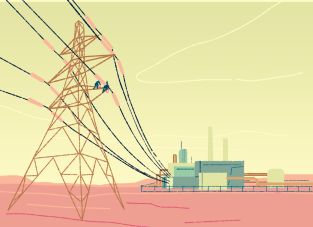Alternative Cement
Local Project
Cement is the second-most widely used substance in the world after water. But manufacturing cement produces billions of tonnes of greenhouse gas emissions each year because its ingredients are heated to extremely high temperatures, requiring lots of energy that often comes from burning fossil fuels. Most of the greenhouse gas emissions from cement are produced during the chemical process of it being formed. Greenhouse gas emissions are also produced by transporting and extracting its ingredients.
To reduce emissions from cement production, researchers are developing alternative ingredients, including volcanic ash, recycled glass, and industrial waste products that can substitute for conventional cement ingredients such as limestone and clay. Others are focusing on making cement using renewable energy, and capturing some of the greenhouse gas emissions produced rather than releasing it to the atmosphere.
But cement and concrete also have serious water, pollution and toxicity impacts. City planners, architects, and engineers can reuse and repurpose existing buildings, structures and materials, and use alternative low-carbon materials like sustainably-sourced timber, to avoid using cement and concrete at all. These options give us cleaner ways to ensure that future generations have sufficient space to work and live in.
You must have 1 Innovation tag in this card's stack to take this action.
Remove 1 Industry Emissions token from your player board.
You may take this action once per round.

Alternative Cement (Project Drawdown)
11 Green Building Materials That Are Way Better Than Concrete (Inhabitat)
Clean Construction Accelerator (C40 Cities)
Building and Infrastructure Consumption Emissions report (Arup)
Concrete: the most destructive material on Earth (The Guardian)
If you’re planning a construction project that would use concrete, challenge your architectural team to consider whether there are existing buildings or materials that could be used instead. If you can’t avoid using concrete, source a low-carbon cement mix.
Campaign for your local building regulations to include phase-out dates for toxic materials like cement and concrete.
Write a letter to the editor of a media outlet you follow, asking them to cover the climate impacts of cement and local architectural projects that use damaging materials.



